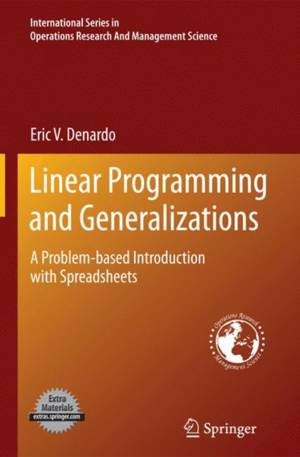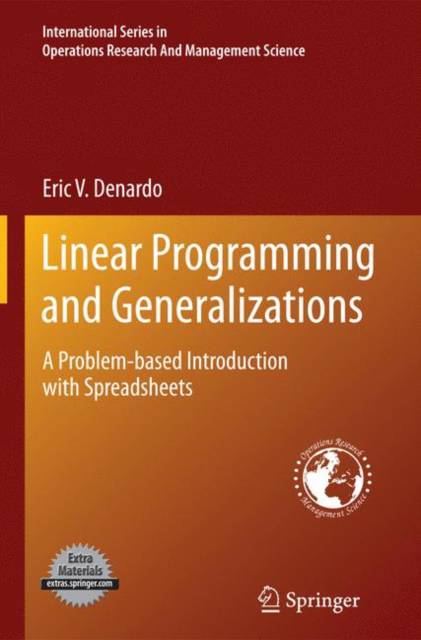
- Retrait gratuit dans votre magasin Club
- 7.000.000 titres dans notre catalogue
- Payer en toute sécurité
- Toujours un magasin près de chez vous
- Retrait gratuit dans votre magasin Club
- 7.000.0000 titres dans notre catalogue
- Payer en toute sécurité
- Toujours un magasin près de chez vous
Linear Programming and Generalizations
A Problem-Based Introduction with Spreadsheets
Eric V DeNardo
95,45 €
+ 190 points
Format
Description
The book is designed for use in courses that focus on the applications of constrained optimization, in courses that emphasize the theory, and in courses that link the subject to economics. It surveys models that optimize something, subject to constraints. The simplest such models are linear, and the ideas used to analyze linear models generalize easily. The book fuses five components: - It uses examples to introduce general ideas. - It engages the student in spreadsheet computation. - It surveys the uses of constrained optimization. - It presents the mathematics that relates to constrained optimization. - It links the subject to economic reasoning. Fusing these components makes constrained optimization more accessible and more valuable. It stimulates the student's interest, it quickens the learning process, it helps students to achieve mastery, and it prepares them to make effective use of the material. A well-designed example provides context. It can illustrate the applicability of the model, reveal a concept that holds in general, and introduce the notation that will be needed for a more general discussion. Examples mesh naturally with spreadsheet computation, and this book is keyed to two software packages, Solver and Premium Solver for Education. To compute on a spreadsheet is to learn interactively - the spreadsheet gives instant feedback. Spreadsheets help the student to become facile with the subject, and they help them use it to shape their professional identities. Constrained optimization draws upon several branches of mathematics. Linear programming builds upon linear algebra. Its generalizations draw upon analysis, differential calculus, and convexity. Including the relevant math in a course on constrained optimization helps the student to master the math and to use it effectively. Nearly every facet of constrained optimization has a close link to economic reasoning. I cite two examples, among many: A central theme of economics is the efficient allocation of scarce resources, and the canonical model for allocating scarce resources is the linear program. Marginal analysis is a key concept in economics, and it is exactly what the simplex method accomplishes. Emphasizing the links between constrained optimization and economics makes both subjects more comprehensible, and more germane. The scope of this book reflects its components. Spreadsheet computation is used throughout as a teaching-and-learning aide. Uses of constrained optimization are surveyed. The theory is dovetailed with the relevant mathematics. The links to economics are emphasized.
Spécifications
Parties prenantes
- Auteur(s) :
- Editeur:
Contenu
- Nombre de pages :
- 673
- Langue:
- Anglais
- Collection :
- Tome:
- n° 149
Caractéristiques
- EAN:
- 9781489977717
- Date de parution :
- 04-05-17
- Format:
- Livre broché
- Format numérique:
- Trade paperback (VS)
- Dimensions :
- 156 mm x 234 mm
- Poids :
- 943 g

Les avis
Nous publions uniquement les avis qui respectent les conditions requises. Consultez nos conditions pour les avis.






